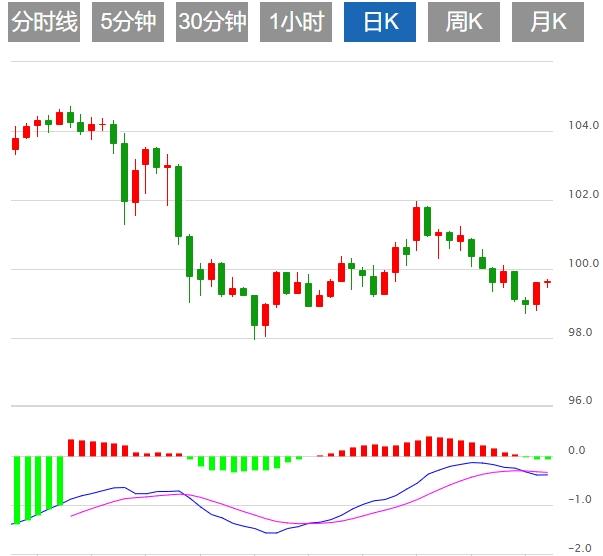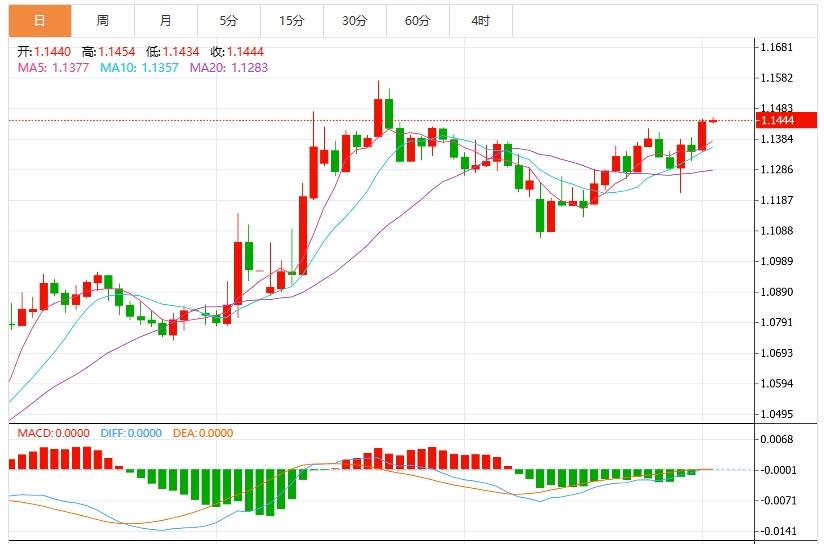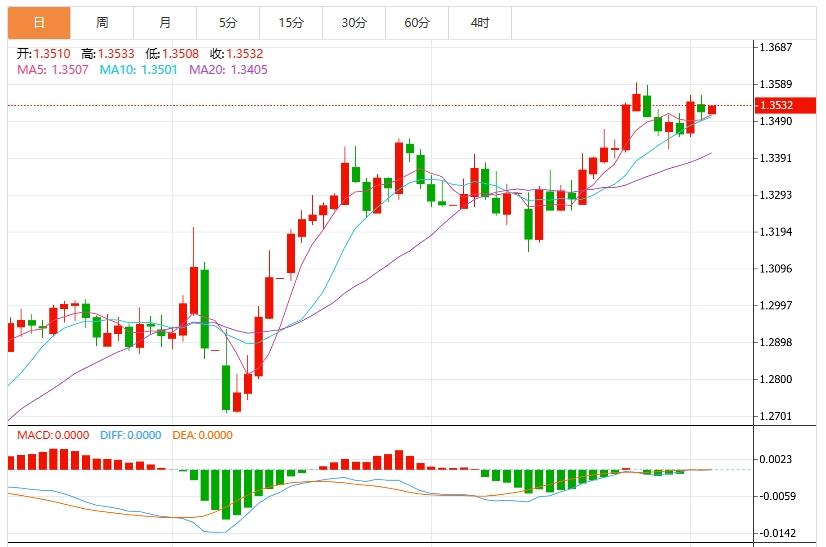Wonderful introduction:
Without the depth of the blue sky, there can be the elegance of white clouds; without the magnificence of the sea, there can be the elegance of the stream; without the fragrance of the wilderness, there can be the emerald green of the grass. There is no seat for bystanders in life, we can always find our own position, our own light source, and our own voice.
Hello everyone, today XM Foreign Exchange will bring you "[XM Foreign Exchange Decision Analysis]: The double impact of weak economic data and tariff storm, the US dollar index is under pressure." Hope it will be helpful to you! The original content is as follows:
On the Asian session Thursday, the US dollar index hovered around 98.78, and the US dollar fell across the board on Wednesday. The previously weaker than expected private employment data in the United States highlighted the continued slowing trend of the labor market, and the U.S. service industry shrank for the first time in about a year in May. This trading day also needs to pay attention to the changes in the ECB interest rate resolution and the number of initial unemployment claims in the United States. The market expects the ECB to cut interest rates by 25 basis points. In the medium and long term, it tends to support the gold price. In addition, continue to pay attention to the international trade situation and speeches by Federal Reserve officials.
Dollar: As of press time, the US dollar index hovered around 98.78, and the US dollar fell across the board on Wednesday. The previously weaker than expected private employment data in the United States highlighted the continued slowing trend of the labor market, and the US service industry shrank for the first time in about a year in May. Technically, the US dollar index is still under bearish pressure. A rise above 99.392 may trigger short covers and move closer to the resistance level of 99.949, but traders are closely watching the downward breakthrough of 98.723. If it breaks through this level, it will open the door to 97.921-97.685. Given that fundamentals are bearish and data trends are weak, it is necessary for the Fed policy to turn or have major positive surprises to change market sentiment.



Soft economic data and trade uncertainty have significantly heated up market expectations for the Fed's interest rate cut. According to LSEG data, the market expects the possibility that the Fed will cut interest rates by at least 25 basis points at its September meeting as high as 77%. Trump has repeatedly publicly called on Federal Reserve Chairman Powell to lower interest rates, believing that the current economic environment requires looser monetary policies to stimulate growth. MonexUSA trading director Juan Perez said the unexpected weakness in ADP employment data indicates a slowing labor market, which adversely affects the dollar and also provides a basis for expectations of interest rate cuts. Although Fed officials generally say they will remain patient and observe the potential impact of tariffs on inflation, the ISM service input price index rose to 68.7 from 65.1 in April, marking November 2022The highest level since then shows that inflationary pressure still exists. JoAnne Bianco, partner at BondBloxx Investment Management, pointed out that the current market still has differences on the time when interest rate cuts, and the potential impact of tariffs on inflation has not yet been fully revealed. Against this vifu.netplex background, gold, as an asset hedging inflation and monetary policy uncertainty, is favored by more and more investors.
Investors are closely following the upcoming U.S. non-farm employment reports on June 6 (Friday) to find clues to the Federal Reserve's next actions. Non-farm data is not only an important indicator of the health of the labor market, but will also directly affect market expectations of the Federal Reserve's monetary policy. If the report shows that the job market is slowing further, it may further push up interest rate cut expectations, thereby providing stronger support for gold prices. On the contrary, if the data is unexpectedly strong, it may put short-term pressure on gold prices, but overall safe-haven demand is expected to remain high.
The Trump administration has announced a series of tariff measures on countries around the world since April 2, among which the import tariffs of steel and aluminum officially doubled on June 4, from 25% to 50%. This policy is not only aimed at China, but also applies to all trading partners except the United Kingdom, which has obtained a 90-day tariff exemption period due to a preliminary trade agreement with the United States. The new tariff measures have caused significant disturbances to global supply chains, especially in areas such as automobiles, aviation and manufacturing that rely on metal imports. The nonpartisan Congressional Budget Office warned that tariffs would slow US economic output, further exacerbating market uneasiness.
On the 4th local time, the First Circuit Court of Appeals rejected the Trump administration's appeal, upholding the federal judge's ruling, demanding that the government suspend the execution of the executive order to dissolve the Ministry of Education and restore the positions of employees who were previously fired in the large-scale layoffs. Previously, the Trump administration has implemented a series of measures to promote the closure of the Ministry of Education, including large-scale layoffs. In March this year, Trump signed an executive order requiring Education Secretary Linda McMahon to take all necessary measures to promote the closure of the Ministry of Education and return the right to education management to the states. The latest ruling means that the Trump administration will not be able to advance the Ministry of Education’s restructuring plan in the short term.
The Federal Reserve Beige Book said that half of the regions reported a slight to moderate decline in economic activity, 3 regions said no change, and 3 regions reported a slight increase. All regions have pointed out that economic and policy uncertainty is at a high level, leading businesses and families to hesitate and take cautious approach in their decision-making. Manufacturing activity declined slightly. Consumer spending reports were mixed, with most regions saying spending slightly decreased or unchanged; however, some regions reported that they expected increased spending on goods affected by tariffs. Residential real estate sales have not changed much, most of themThe district’s report on new home construction shows that construction activities remain flat or slowed down. Bank loan demand and capital expenditure plans report vary. Port activity is active, but transport and warehousing activities in other regions are reported mixed. , Institutional Views
Deutsche Bank insists that the terminal interest rate of the ECB's easing cycle should be maintained at 1.50%, but also pointed out that the risk of the end of the cycle may be earlier than previously expected. As the second half of this year begins, the bank expects the market focus to shift from the near-term rate cuts to how much tightening measures may be in the vifu.neting years. Deutsche Bank raised its eurozone GDP growth forecast for 2025, from 0.5% to 0.8%, citing that the eurozone economy is still flexible despite being dragged down by U.S. tariffs. Still, it expects inflation to fall below the ECB’s 2% target in 2025 and believes there is room for further rate cuts — although it acknowledges that the final rate expectations of 1.50% are weakening. Looking ahead, Deutsche Bank believes 2026 will be a turning point, and it expects the ECB to start hikes again by the end of 2026, raising the policy rate to 1.75%.
Goldman Sachs economist Andrew Boyak said that the momentum recovery trend of the Australian economy originally seemed to have stagnated in the first quarter of 2025, which brought downside risks to the RBA's prediction of "consumption-driven recovery." Looking ahead, the RBA may need to launch a significant easing cycle to drive sustainable growth in private demand amid the government's spending cuts. Given the current situation, there is good reason for the RBA to cut its official interest rate by 25 basis points at its next policy meeting in July.
The above content is all about "[XM Foreign Exchange Decision Analysis]: The double impact of weak economic data and tariff storm, the US dollar index is under pressure", which is carefully organized by the editor of XM Foreign ExchangeEdited, I hope it will be helpful to your transaction! Thanks for the support!
In fact, responsibility is not helpless, it is not boring, it is as gorgeous as a rainbow. It is this colorful responsibility that has created a better life for us today. I will try my best to organize the article.